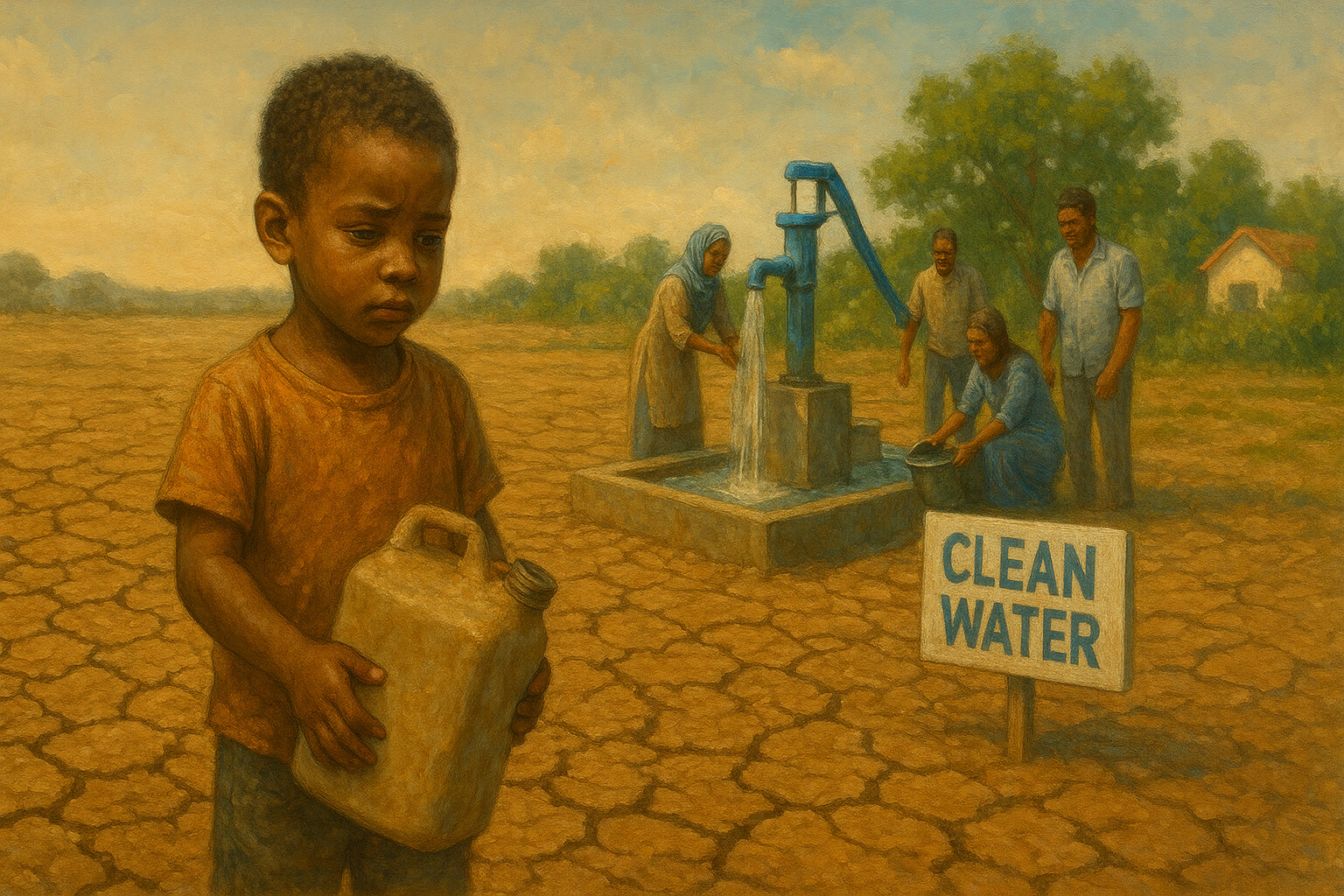Water is the foundation of life, yet billions of people around the globe struggle to access clean, safe, and sufficient water daily. According to the United Nations, over 40% of the global population already faces water scarcity—a figure expected to rise significantly due to climate change, rapid population growth, and unsustainable water management practices. What may seem like a distant issue is, in reality, one of the most pressing challenges of the 21st century.
Understanding Water Scarcity
Water scarcity is more than simply not having enough water—it reflects an imbalance between supply, demand, and accessibility. A region may have water sources but lack infrastructure to distribute it, or the available water may be contaminated and unsafe to drink.
Key Drivers:
- Agriculture: Farming consumes nearly 70% of global freshwater, often using outdated irrigation methods that waste enormous quantities. As highlighted in Water Scarcity: A Growing Global Crisis, unsustainable practices deplete aquifers faster than they can be replenished.
- Urbanization: Rapidly growing cities strain local water systems, creating shortages in urban centers.
- Industrial Use: Industries like textiles, mining, and energy divert water and often pollute local sources.
- Poor Infrastructure: In many developing regions, broken or outdated pipelines lead to massive water loss—sometimes up to 40% of supply.
Community-driven water conservation programs, such as teaching farmers efficient irrigation techniques or creating village water committees, have proven effective in reducing local water stress, as shown in Sustainable Living: Small Changes, Big Impact.
The Human Impact
Water scarcity intersects deeply with poverty, hunger, gender inequality, and health.
- Health Risks: Contaminated water causes diseases like cholera, diarrhea, and dysentery, killing hundreds of thousands each year. According to the World Health Organization, nearly 2 billion people lack access to safely managed drinking water.
- Education Barriers: In many developing countries, children—especially girls—walk miles daily to fetch water, affecting their education and perpetuating cycles of poverty. Resources on the importance of early childhood education emphasize how water scarcity directly impacts learning outcomes.
- Gender Inequality: Women disproportionately bear the burden of water collection, sacrificing opportunities for employment or community participation, as highlighted in the role of women’s empowerment in poverty reduction.
- Economic Losses: Water shortages disrupt agriculture and industry, threatening food security and livelihoods, connecting to food insecurity insights.
Innovative solutions, such as rainwater harvesting, solar-powered purification systems, and community-led sanitation projects, have transformed communities. Case studies in sustainable community projects demonstrate that local engagement and ownership are key to long-term water security.
Climate Change and Future Risks
Climate change is reshaping the global water map. While some regions face prolonged droughts, others encounter devastating floods—both disrupting water security.
- Droughts: Prolonged dry periods in Sub-Saharan Africa and the Middle East reduce agricultural productivity, triggering food shortages and potential resource conflicts.
- Flooding: Extreme rainfall in South Asia damages water infrastructure, contaminating supplies with pollutants.
- Glacial Melt: Melting glaciers in the Himalayas and Andes threaten rivers that supply freshwater to millions downstream.
- Rising Seas: Coastal aquifers face saltwater intrusion, rendering freshwater undrinkable.
NASA’s Earth Observatory highlights that billions could face chronic water insecurity within decades without urgent intervention. Awareness campaigns, like those in environmental awareness initiatives, play a vital role in educating communities and advocating for preventive measures.
Collective Action for a Sustainable Future
Tackling water scarcity requires coordinated action at all levels—from governments and industries to individuals and local communities.
- Government Action: Implement stricter water management policies, invest in infrastructure, and prioritize clean water in development agendas.
- Industry Responsibility: Reduce water footprints through eco-friendly manufacturing, wastewater reuse, and minimizing pollution.
- Community Solutions: Villages worldwide prove collective action works—via water recycling, sustainable farming, and education programs.
- Individual Contributions: Simple steps like fixing household leaks, using rainwater harvesting, conserving water in gardens, and reducing food waste have cumulative impacts, as detailed in eco-friendly home practices.
The UN Water Action Decade offers a roadmap for sustainable water management, highlighting that solutions range from cutting-edge desalination plants to traditional rainwater collection.
Final Thoughts
- Water scarcity is not a distant problem—it is a growing reality affecting billions of lives, economies, and ecosystems. By understanding its causes, acknowledging human impacts, and embracing collective solutions, we can move toward a more water-secure future.
- Every drop counts, and every action matters. Ensuring clean, safe, and sufficient water for future generations is both an environmental necessity and a moral obligation. Resources on sustainable living, reducing carbon footprint, and eco-friendly home practices provide actionable steps for individuals and communities to make a real difference.
